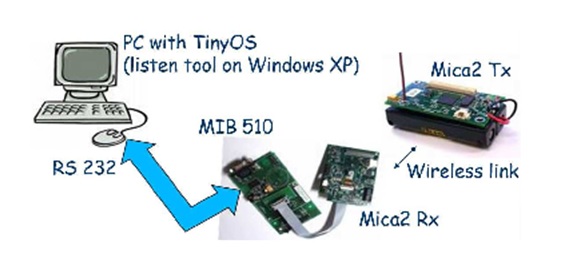[Completed] “Investigation of transmit power control and its implementation in wireless ad hoc and sensor network nodes”, DST, 2008-11 (PI)

Figure: Basic experimental setup for transmit power control implementation on wireless sensor nodes
The main goal of the project was to investigate various power saving measures in wireless ad hoc sensor networks via novel network
protocols and their optimizations. The effect of transmit power control was proposed to be analytically studied by
evaluating the optimized network protocols at the channel access, link layer transmission, and network-level.
Next major objective was to implement and evaluate the automatic transmit power control protocols at the node level.
The key contributions of our experimental studies are: a) dynamic frame size control implementation as a power saving measure;
b) implementation of optimized frame repeat window and transmit power adaptation; and c) implementation of joint transmit
power and frame size control in a dynamically changing environment around a given transmitter-receiver pair to minimize the
effective energy consumption. The proposed power control strategies can be implemented in the actual sensor as well as ad
hoc network nodes for energy-efficient communications.
[Students: : Bighnaraj Panigrahi, Ravikant Saini]
